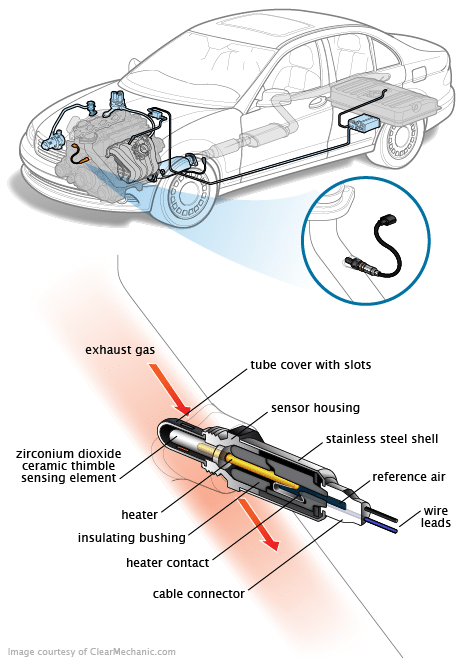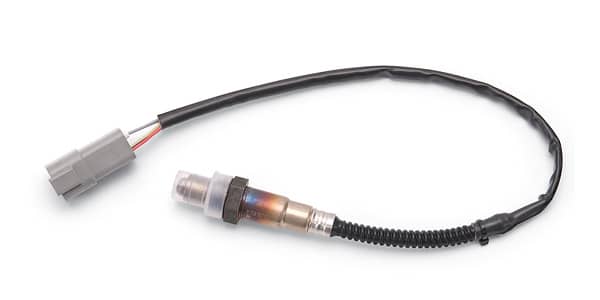Oxygen sensors have been standard features in cars since the ‘80s. Early cars had one or two of these built-in, but since the mid-1990s the number of sensors has doubled. While oxygen sensors play an important role in regulating emissions, many car owners are not familiar with its function, and some don’t even know cars have them.
How Oxygen Sensors Reduce Pollution
 Your car’s sensors check the level of oxygen (O2) in the exhaust to determine the appropriate fuel / air mixture, reducing emissions in the process. Usually the sensor is set on the exhaust manifold downpipe between the catalytic converter and exhaust manifold, or just before the catalytic converter. When running properly, the sensor produces a voltage signal proportional to the oxygen inside the exhaust.
Your car’s sensors check the level of oxygen (O2) in the exhaust to determine the appropriate fuel / air mixture, reducing emissions in the process. Usually the sensor is set on the exhaust manifold downpipe between the catalytic converter and exhaust manifold, or just before the catalytic converter. When running properly, the sensor produces a voltage signal proportional to the oxygen inside the exhaust.
If the fuel / air mixture is rich with very little oxygen in the exhaust, the difference level produces a voltage in the sensor’s platinum electrodes, usually 0.8 to 0.9 volts. If the fuel / air mixture is lean with more oxygen, the voltage output will be in the 0.1 to 0.3 volt range. When the mixture is finely balanced with clean combustion, the voltage should be around 0.45.
The voltage signal is tracked by a computer, and this system is responsible for managing the fuel mixture. When your car’s engine computer receives a high voltage (rich) from the sensor, it sends a command to make the fuel mixture leaner. If the sensor signal is low voltage (lean), a command is issued to make the mixture richer. This cycling goes on and on to reduce the emissions and provide assistance to the catalytic converter in its operation.
Benefits
The faster the sensor reacts to the oxygen changes within the exhaust, the more efficient it is in terms of low emission, peak fuel economy and precision fuel control. The fuel / air mixture in older engines don’t respond as quickly compared to a fuel injected car. The newer engines however, have multi-point fuel injection and faster fuel / air mixture changes, so a quick response from the oxygen sensor is necessary.
Maintenance
As an oxygen sensor gets older, contaminants from oil ash and combustion gather on the sensing element, and this affects the sensor’s ability to adapt to the changes in the mixture. As the sensor slows down, performance is affected. An old sensor’s output voltage will no longer be as high as it used to be, producing the effect the mixture is leaner than it really is. If this is not handled properly, the mixture will be richer than normal and increase emission and fuel consumption.
All too often car oxygen sensors are ignored until something drastic changes happen or performance deteriorates. Dirt, oil, salt and other environmental factors can lead to stress and wear and tear, so have it checked on a regular basis and if damage is extensive, have it replaced. If the sensor is dead, the car’s computer won’t be able to make adjustments to the fuel / air mixture, hence the need for maintenance.

